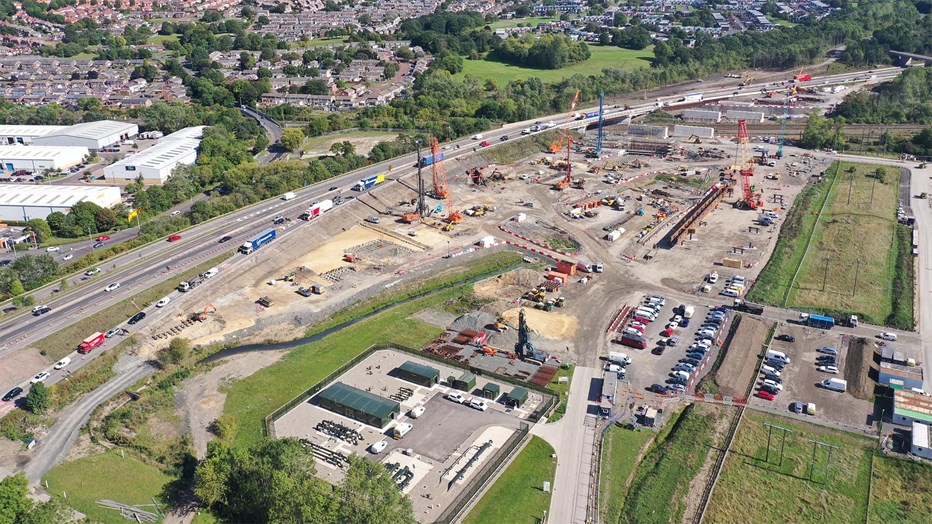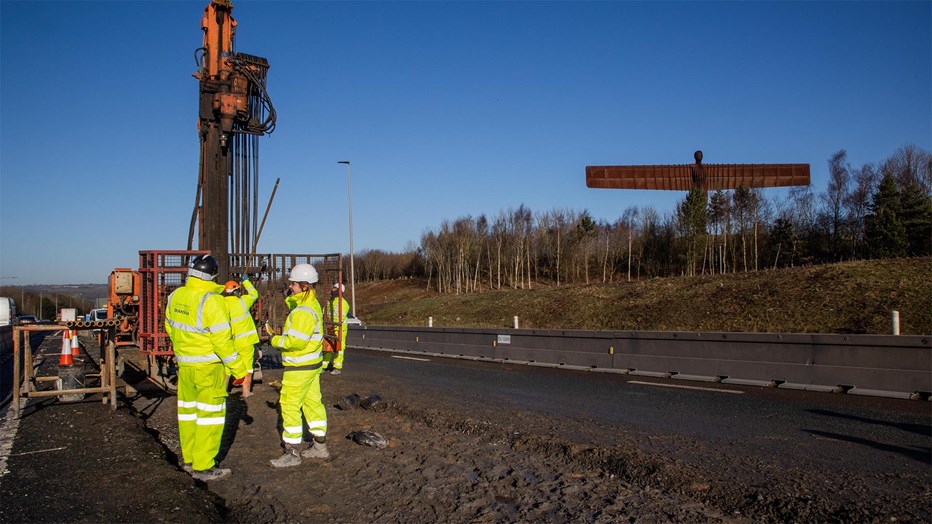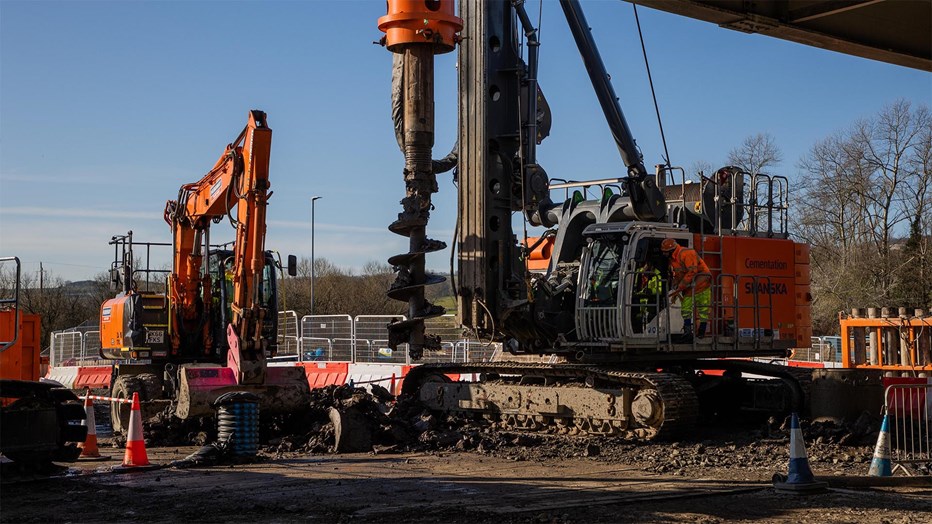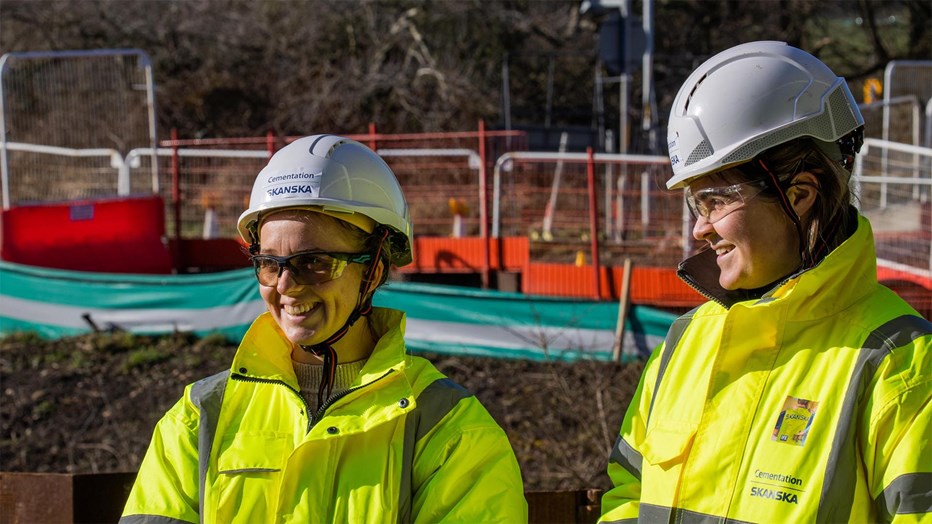The project
Cementation Skanska carried out a broad scope of work on the A1 Birtley to Coalhouse Improvement Scheme over several phases.
The improvement scheme, in the northeast of England, is part of National Highways Regional Development Programme and was needed to alleviate congestion, improve journey time reliability, and boost local economic growth. It included the realignment of the A1 over the East Coast Mainline, bridge widening at Kingsway viaduct and road widening between Birtley and Coalhouse.
Costain, who were acting as Delivery Integration Partner for National Highways, along with design partner Jacobs, appointed Cementation Skanska as specialist subcontractor. Our involvement covered three separate work packages: mine treatment, rotary bored piling and ground improvement using rigid inclusions.
The challenge
The work in these packages presented some complex challenges and gave us the opportunity to showcase the breadth and depth of our expertise.
- Geological complexity:
The team encountered a wide range of ground conditions across the different sites and work packages.
With a history of deep coal mining, the ground was unpredictable with the potential for hard bands, extensive thicknesses of coal, and historic coal workings. Drilling depths varied, in some cases depths were 60m including more than 30m of rock drilling. In other areas we worked through variable soft glaciolacustrine soils, so it called for exceptional levels of knowledge and experience.
- Operational constraints:
The site locations and layouts along with uncertainties around the overall programme and sequencing, brought with them some tough operational challenges.
The East Coast Main Line live tracks ran very close to the works but ‘any line open’ (ALO) conditions throughout meant ensuring the work caused no disruption to the railway.
Equally challenging was the Kingsway viaduct site. Positioned in the centre of a roundabout and alongside live traffic on the A1, the site was divided by the river Team. This made for tight working conditions and limited access points. These constraints meant detailed sequencing and plant movement planning were essential. - Resource supply:
Resource demand and availability was another major challenge. Not least because of the scale of the geotechnical works, exacerbated by inflationary cost pressures which were unprecedented in recent times. At the peak of activity, the daily concrete demand was as much as 580 m3, making carbon reduction another vital consideration.
The solution
Recognising the scale of the challenge Jacobs and Costain implemented a specialist Early Contractor Involvement process. Cementation were successful in a competitive Pre-Construction Services tender process. Several months of collaborative technical, operational and commercial work were undertaken – in parallel with detailed design – before any works commenced on site.
Considering the geology, test piles were used in two of the work packages to validate design assumptions and buildability.
Having developed constructive relationships and a good understanding of the overarching project objectives, a number of commercial models were developed to suit the different work packages and particular requirements and challenges of each. Cost reimbursable, remeasurement and lump sum models were developed and deployed to ensure the right balance of risk and reward. The rigid inclusion works, the largest of the three packages, were undertaken on a cost reimbursable NEC Option E contract.
Choosing this contract allowed for collaboration to sit at the heart of delivery. With Cementation and Costain working hand in hand throughout the delivery phase, it ensured that sequencing, deliveries and constructability were considered alongside other trades.
Time was a critical success factor due to open-for-traffic deadlines and this working model ensured the safe, high-quality delivery of requirements in the shortest time frame possible. The commercial model used served the joint outcomes and was successful in aligning all parties in achieving them.
We also worked in collaboration with Costain to secure resource availability in various ways. Measures included securing internal and external plant and labour resources and setting up an on-site concrete batching plant dedicated to delivering the geotechnical works. In all, the on-site plant supplied 40,000m3 of concrete to the project.
Outcome
The final work package alone delivered over 6500 rigid inclusions and flared heads requiring more than 35,000 cubic metres of concrete.
Having the batching plant on-site cut 5,861 lorry movements. This reduced road journeys by more than 48,000 miles – a 62% reduction in carbon when compared against traditional supply methods. These savings are in addition to the substantial programme and cost saving resulting from direct control of the concrete supply.
The collaborative commercial model also proved exceptionally beneficial in fostering productive working relationships, generating around 15% cost savings, near frictionless programme delivery and completion 55 days ahead of schedule.
All in all, this resulted in the successful, high quality and safe completion of this project, paving the way for a target open for traffic date by mid-2024.




